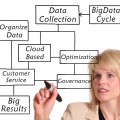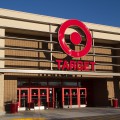 The massive amounts of data collected and disseminated by the federal government could bring benefits to average citizens and businesses at very little cost, according to a report released by the U.S. Department of Commerce.
The massive amounts of data collected and disseminated by the federal government could bring benefits to average citizens and businesses at very little cost, according to a report released by the U.S. Department of Commerce.
The study, “Fostering Innovation, Creating Jobs, Driving Better Decisions: the Value of Government Data,” looked at data provided by 13 statistic-gathering agencies from 2004-2013 including the U.S. Census Bureau and the Bureau of Economic Analysis.
While the average annual expense of gathering data was about $3.7 billion, the cost to citizens worked out to about three cents per person per day. The annual cost is about .02% of the $17 trillion annual federal budget.
A conservative estimate of the dollars generated from government data is about $24 billion annually, or about six times more than what is spent to collect the data. A rosier estimate puts annual generated revenues at about $221 billion.
Commerce officials offer one caveat to the study. There is no way to precisely determine the value of data in relation to its cost.
What researchers considered were annual budgets for the agencies included in study and the many ways in which both public and private sectors reap benefits from using the data. The statistics are often “invisible” because public federal data is not copyrighted and anyone can use it without attribution.
The government’s interest in data collection dates at least to the first Decennial Census completed in 1790 when the newly-established nation had about 4 million people. The federal government’s capabilities and need for data gathering has grown enormously over the decades, accelerating with state-of-the-art technology to meet the needs of today’s 318 million population.
In a blog, Under Secretary for Economic Affairs Mark Doms says the government’s data gathering and dissemination helps businesses become more competitive, government function smarter and average citizens be better informed. Data is gathered on a vast range of topics including gross domestic product, unemployment, retail sales, residential construction and corporate profits.
The report highlights examples of how government data provides benefits.
Brightscape, for example, is a financial information company that provides ratings and investment analysis of retirement plans to plan participants, sponsors, asset managers and financial advisers. The company relies, in part, on retirement plan data provided to the U.S. Department of Labor annually.
Center City District in Philadelphia uses census data to determine how to spend its $20 million operating budget on downtown beautification and safety.
Target Corporation uses data from the Census Bureau’s American Community Survey to decide what types of merchandise will sell in particular neighborhoods at its 1,700 stores in 49 states.





